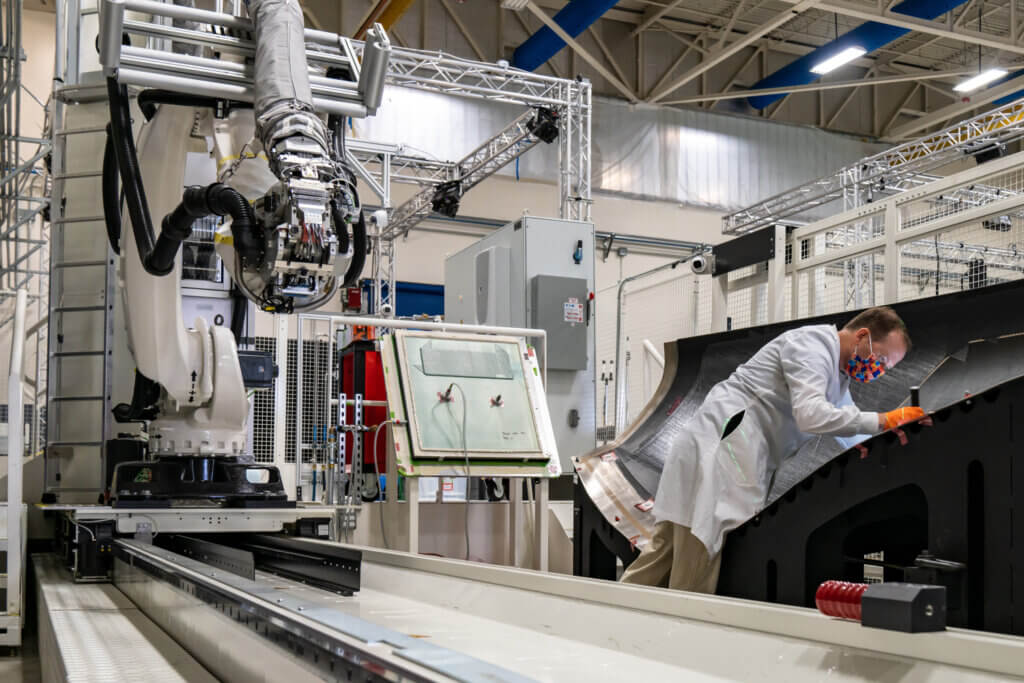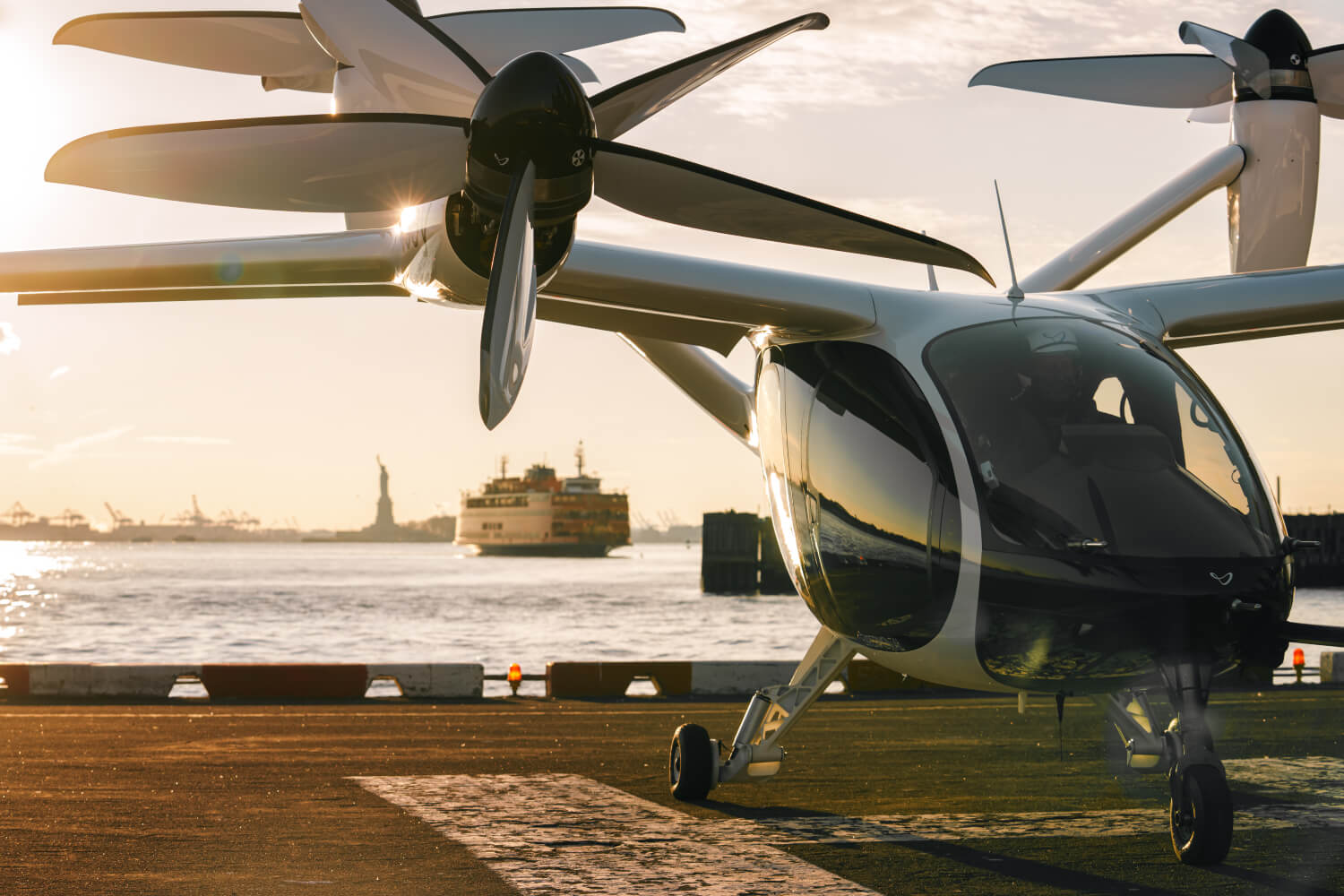The eVTOL industry is often touted by its enthusiasts as sustainable. Electric (and increasingly, hydrogen) propulsion is presented as a primary benefit of eVTOLs in terms of environmental impact, and a critical reason for supporting the sector’s success.
Of course, electric propulsion and hydrogen is only sustainable if the electricity used to charge the batteries is created from sustainable sources (from hydro-electric dams, solar, wind or nuclear power plants). Decarbonization of the electric grid is therefore a primary factor in the overall environmental impact of eVTOLs. Boosting battery density takes second place in the view of many, as that will mean less power is required per unit of weight or distance.
But beyond these two factors, which other areas mostly impact the overall level of sustainability of the rest of the eVTOL sector right now? And where should future work focus?

From an operational perspective, Dr. Gregory Keoleian, co-director of the Center for Sustainable Systems at the University of Michigan, believes that overall, eVTOLs should have a limited and strategic role in sustainable transportation.
“They can be effective only where ground transportation follows circuitous routes that require significantly greater travel miles than is required by air,” he said. “Examples are having to route around a water body or mountain whereas aircraft take a direct path.”
With colleagues at the University of Michigan, as well as some at Ford Motor Company’s Research and Innovation Center in Michigan, Keoleian published a recent paper in the journal Nature Communications that found that (among other limitations) eVTOLs can outcompete ground-based vehicles only if it is over 60 miles (97 kilometers) and the eVTOLs have full occupancy compared to passenger cars, which only have a typical average occupancy of 1.5 passengers.
Manufacturing
In addition to how eVTOLs are powered, how their manufacturing plants will be powered is also a sustainability issue.
It’s a no-brainer, noted Scott Beatty, director of business development at consulting firm Sundberg Ferar, to try and incorporate some kind of renewable energy at these plants — and some eVTOL firms are already there. As of 2022, Joby Aviation transitioned its primary facilities in California to 100% renewable electricity, and has also established recycling programs for batteries and key material scraps.
The supply chain for materials and components before they reach the plant is another area where sustainability can be boosted. Beatty pointed out that Tier 1 suppliers need to target waste reduction, efficient resource use, and selection of eco-friendly materials.
Sustainable manufacturing also means low-energy and low-emission manufacturing processes. For example, the use of “additive” manufacturing (3D printing) where it makes sense, can significantly reduce energy use. Beatty added that “these techniques and technology allow for more complex, lightweight designs, which can lead to more efficient eVTOLs, both in terms of manufacturing and operational energy consumption.”
Automation can also save energy, reduce waste and help scale production with a lower environment impact, Beatty said.
And as mentioned, yet another area of eVTOL sustainability is the choice of materials. Beatty noted that “using bio-based composites, recycled materials, or other eco-friendly options can significantly decrease the environmental impact during both the production and operational phases of the eVTOL lifecycle.”
Cradle to cradle
As the industry develops, recycling the airframe after the aircraft’s lifecycle may be achievable. (Recycling after end of use is known as a “cradle to cradle” approach to design and manufacture, as opposed to “cradle to grave.”) Indeed, looking to the future, Keoleian stated with his colleagues that as the eVTOL sector evolves, its sustainability “should consider the total vehicle cycle burdens for these aircraft, once there is more clarity on material selection, manufacturing processes, design and disposal.”
Beatty explained that circular design practices for eVTOLs (or any other product) are those that keep recyclability in mind, with a focus on selecting materials and construction methods that facilitate easy disassembly and recycling at the end of the aircraft’s lifecycle, reducing waste and the use of raw materials.
In 2022, Joby completed the industry’s first initial lifecycle assessment (LCA) of an eVTOL aircraft’s greenhouse gas emissions, including raw materials, manufacturing, assembly and operations.
Joby spokesperson Katie Pribyl explained that “audited by the U.S. Department of Energy’s National Renewable Energy Laboratory [NREL], the LCA provides us with quantitative metrics across every aspect of manufacturing that informs our strategy to reduce our aircraft’s environmental footprint in the years ahead.” Joby’s entire Environmental, Social and Governance Report can be found here.
In January 2024, Airbus announced the opening of the first service center dedicated to the entire lifecycle of an aircraft. The Airbus Lifecycle Services Centre (ALSC) has started its operations in Chengdu, China. It is certified by both the European Union Aviation Safety Agency (EASA) and the Civil Aviation Administration of China (CAAC). The ALSC is a joint venture between Airbus, Tarmac Aerosave, and the city of Chengdu, along with the Airbus company Satair.

“This center is the first of its kind to cover, as a one-stop shop, the full range of activities from aircraft parking and storage to maintenance, upgrades, conversions, dismantling and recycling services for various aircraft types, as well as the controlled distribution of used parts from dismantling,” the company stated in a press release.
The ALSC covers a surface area of 717,000 square meters (7.7 million square feet) and has a storage capacity of 125 aircraft. The site will progressively ramp up operations between now and 2025, directly employing up to 150 employees.
In addition, the main buildings are LEED (Leadership in Energy and Environmental Design) certified, which reduces energy use and other environmental impacts of operations at the ALSC site.
From a lifecycle manufacturing perspective, Keoleian said that while the lifecycle energy consumption for aircraft is dominated by the use phase, during the manufacturing phase, energy consumption can be most significantly addressed in producing lightweight materials, such as aluminum, titanium and carbon fiber composites, and producing the batteries.
“Aluminum production from bauxite ore is energy intensive, but opportunities exist for closed loop recycling to recover the different aluminum alloys after decommissioning,” he reported. “Aluminum body panels from recycled material are 90% less energy-intensive than production from virgin sheet. The automotive industry has been focused on developing infrastructure for closed loop recycling of aluminum and high-strength steel body materials. Carbon fiber composites are energy and carbon-intensive and are difficult to recycle.”
Big picture
Overall, Beatty views sustainability in eVTOLs as being “promising, but complex.”
“The ‘big four’ beyond electric propulsion and green energy are truly the key: sustainable manufacturing processes, use of renewable energy sources in production, adoption of eco-friendly materials, and circularity practices via end-of-life recyclability of components,” he said. “Green electricity sources play a critical role in reducing the carbon footprint, not just in operation but throughout their lifecycle. The challenge lies in tethering these sustainable practices through forward thinking OEMs [original equipment manufacturers] and Tier 1 [suppliers] into all aspects of eVTOL development and operation. This ensures a holistic approach to environmental sustainability.”
In addition, there should be a focus, Beatty said, in creating sustainable supporting infrastructure in vertiports and aligning with environmental regulations and community standards. In his view, there is no single silver bullet, but a collective of improvements and gains to be made across disciplines.
“It’s all these integrated efforts that will move the needle for minimizing the sector’s ecological footprint,” he said.





